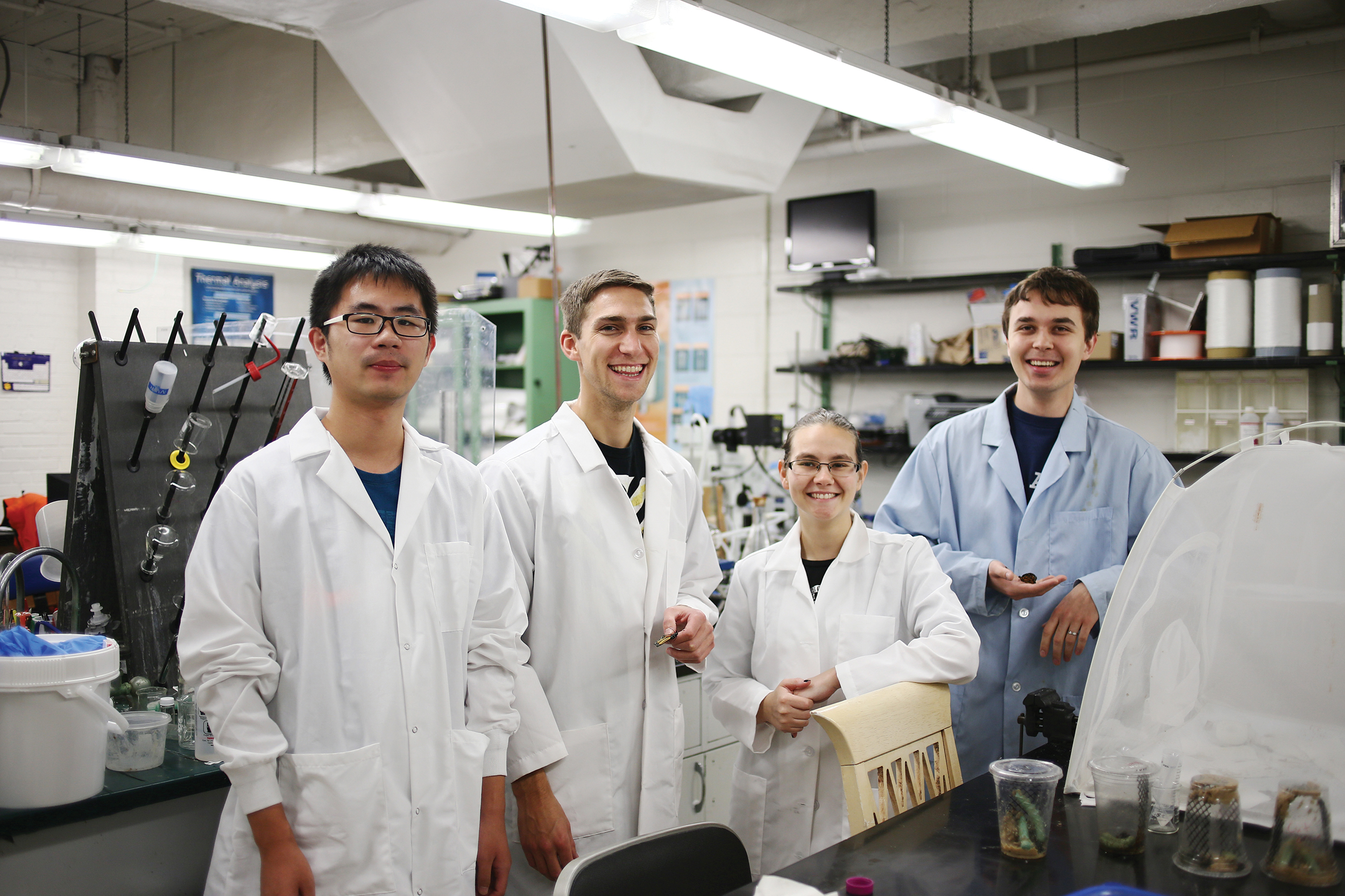Butterfly Proboscis Structure and Inspiration
By Elise Bell
Butterflies are fluid feeds with a complex feeding structure. The function of the butterfly’s feeding tube, known as the proboscis, is to suck up fluids. The proboscis has a simple job but it is a complex biological structure that few scientists have examined closely. While the butterfly feeding habits are traditionally researched, little is known about proboscis structures not visible to the naked eye.
As part of the Butterfly Proboscis Structure and Engineering Inspiration Creative Inquiry, biology and engineering students collaborate to investigate the hidden structure and function of the proboscis. The multidisciplinary group operates daily as two teams but they meet monthly to share their findings and observations. Both groups bring new perspectives and different skillsets to the project. The biology team is able to give advice on biological aspects while the engineering team provides a new structural understanding of the proboscis. These brainstorming sessions give rise to thought-provoking discussion that merges the two fields of study.
As a junior environmental engineering major, Alison Arling joined the project to expand her academic interests, which was a common motivation for many of the students involved. To further capitalize on the multidisciplinary effort, the team also acquires an understanding of histology, the study of tissues. A proboscis has both hard and soft tissue and preserving both has proven to be one of the biggest challenges for the group. They have been gradually devising a method with different chemicals that allows them to conserve both types of tissue as working with delicate, live specimens requires considerable care and attention to detail.
Dr. Charles Beard, Dr. Peter Adler and Suellen Pometto from the Department of Plant and Environmental Sciences are collaborating with Dr. Terri Bruce, Director of the Clemson Light Imaging Facility to mentor the biology team of this Creative Inquiry. Meanwhile, the engineering team is led by Dr. Konstantin Kornev from the Department of Materials Science and Engineering. The engineering team uses the biological information to focus on the structural function of the proboscis itself. “The structure has been overlooked, you need an engineer to explain the properties of how it works. That’s where we come in,” Luke Sande, a graduate student, said. He works together with Victoria Galway, a sophomore materials science and engineering major, to measure mechanical properties of the proboscis and relate them to the structure.
Previous studies reported that once a proboscis splits, the structure would not be able to repair itself. The students’ research shows that this structure is capable of rejoining the two halves, contrary to these past observations. Moving forward, the students would like to take what they have learned about the butterfly proboscis and examine similar structures on horseflies. In the past, the group developed an artificial proboscis with unprecedented fluid transport properties. Now they want to create a smart fiber modeled after the proboscis that can similarly coil, uncoil and deposit liquids to further understand the structural function of the proboscis.






